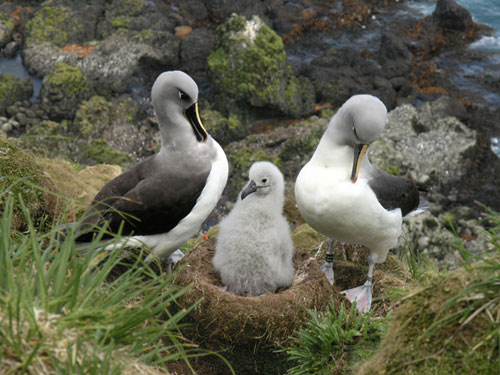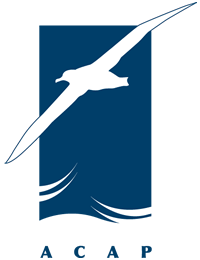Rob Ronconi (Department of Biology, Acadia University, Wolfville, Canada) and colleagues, writing in a special issue of the journal Biological Conservation, introduce a suite of 14 papers edited under the heading Seabirds and Marine Protected Areas Planning by Daniel Oro, Rob Ronconi, Ben Lascelles, James Reid and Gary Langham (click here for a listing and to access abstracts). The papers were presented at the First World Seabird Conference, held in Canada in 2010.
The introductory paper's abstract follows:
"Currently less than 1% of the world's seas are under any form of protected area designation, thus, there is an important and immediate need for tools to identify and delineate a network of ecologically representative Marine Protected Areas (MPAs). Although the role of seabirds in MPA identification and the importance of MPAs to seabird conservation have been discussed for more than a decade, the actual designation of MPAs using seabird data has lagged far behind. To synthesize the current state of knowledge regarding seabirds and the designation of MPAs, this special issue presents 14 papers resulting from the 1st World Seabird Conference, held in Canada in 2010. These papers present examples from around the world that show the important role seabirds can play in the identification, design, implementation, and monitoring of MPAs. Approaches to seabird MPA site identification consider single- versus multiple-species approaches, mapping of marine biological ‘‘hotspots'', and assessment of overlap with risks and threats. The delineation of MPA boundaries may further be refined with information on seabird foraging ranges, at-sea density estimates, and tools for ranking areas based on conservation priorities. Seabirds can also be used to evaluate the effectiveness of MPAs as conservation tools by monitoring changes in seabird foraging ranges, patterns of distribution and abundance, and population dynamics. To date, very few MPAs have been established specifically for the benefit of seabirds, however, many of the papers in this special issue suggest that this should become a growing trend in seabird conservation and marine spatial planning."

A breeding family: Grey-headed Albatrosses
Photograph by Rowan Treblico
Click on Adams and Lascelles to read earlier news items on two of the MPA papers published in this suite.
Reference:
Ronconi, R.A., Lascelles, B.G., Langham, G.M., Reid, J.B. & Oro, D. 2012. The role of seabirds in Marine Protected Area identification, delineation, and monitoring: introduction and synthesis. Biological Conservation 156: 1-4.
With thanks to Barry Baker for information.
John Cooper, ACAP Information Officer, 9 December 2012

 English
English  Français
Français  Español
Español